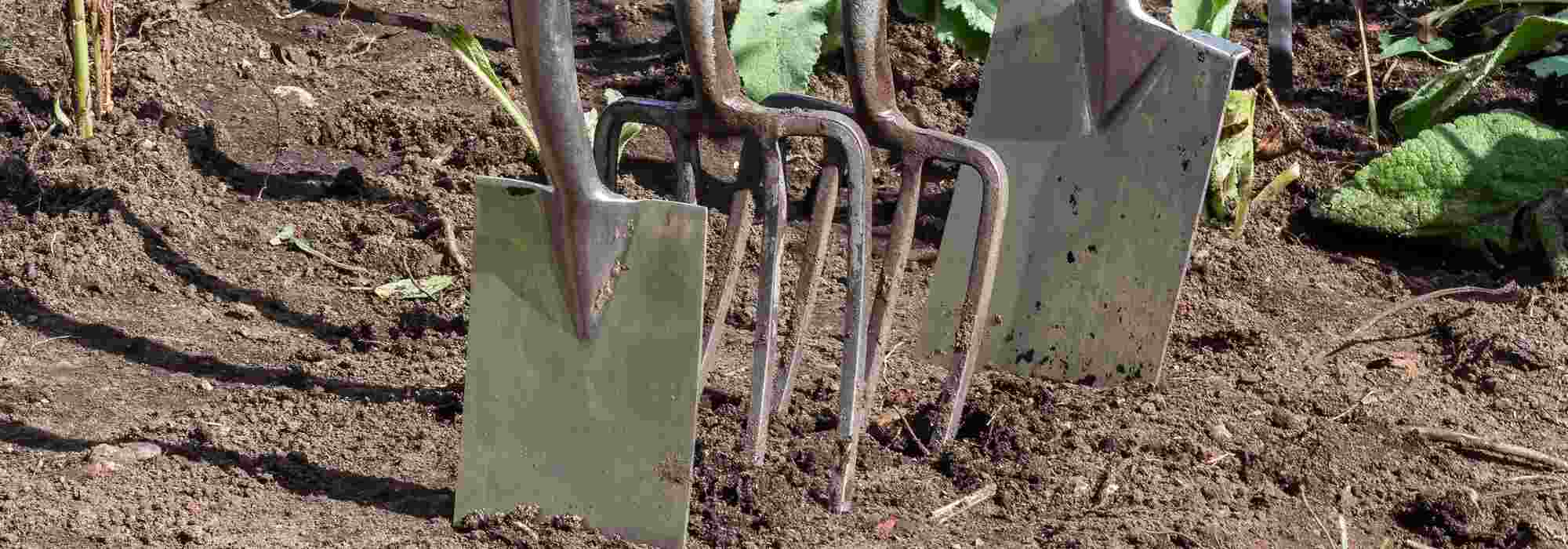
What is a spade used for?
An indispensable tool
Contents
All gardeners worldwide need a spade. This long-handled tool can declinate in various ways: with a flat, sharp blade as in classic spade-shovels, with a longer, narrower blade as in narrow spades, or with four tines as in spade-forks. The spade can be used for spading, of course, but also for digging planting holes, dividing perennials, transplanting plants, lifting roots, bulbs and tubercules out of the soil…
How to use a spade? What factors should be considered when choosing a spade? Find all the answers to your questions in our advice sheet.
What is a spade?
Spade is a relatively simple gardening tool. It consists only of a handle of varying length in wood or composite material (as in case of Novagrip Leborgne spade) and a spade blade. This handle may end with a grip or a “T” for manoeuvrability when levering. Spade blade is made of treated or untreated steel and can be of different shapes and lengths. A mirror-finish treated spade blade is ideal in sticky soil, as it does not adhere to the tool (Spear & Jackson mirror-polished stainless-steel spade).
Traditional spade, flat spade or shovel-spade: blade of this spade is a more or less rectangular, flat piece of steel. Spade blade is sharp at its base and the edge is often curved to form a footrest. This type of spade is used for everyday work in normal soil.
Some spades are more surprising, such as Pypere’s “shark” spade fitted with a blade bearing four sharp teeth. Other manufacturers abandon steel for other metals, such as copper, as in case of tools from Schauberger range.
please note : there is also the transplanting spade or nurseryman’s spade: blade of this spade resembles that of a traditional spade, but is narrower and longer. Transplanting spades are used to plant and transplant trees and bushes or for work in heavy, compact soil. Spading fork or digging fork, meanwhile, consists of a handle and a head with three or four steel tines (rarely more). Spading fork is excellent for all garden tasks and respects soil life.
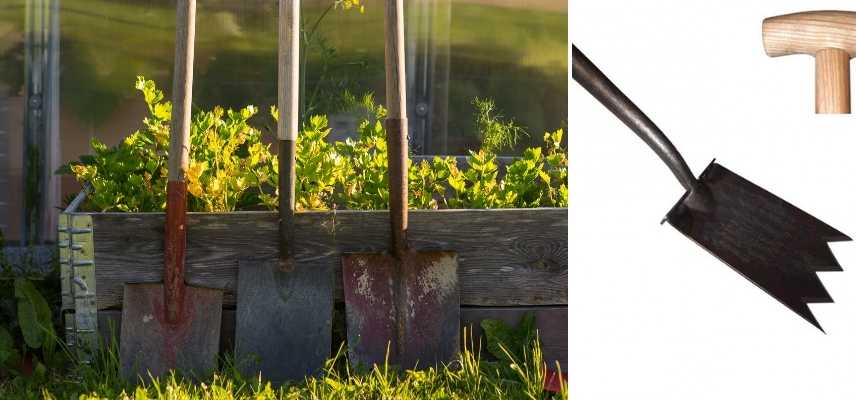
Traditional spades; on right, Pypere’s “shark” spade
→ Find our range of spades, transplanting spades and spading forks in our online nursery.
How to choose your spade?
A spade is not a tool you choose lightly at a supermarket checkout like a pack of chewing gum. A few points should be considered to guide you in choosing a good spade:
- Type of spade : a traditional spade will do in most gardens unless your soil is very heavy and compact. In that case, a heavy-duty spade (louchet) will be more practical. A digging fork can also be useful in this type of soil, and for gardeners keen not to overly disturb soil life and structure. A digging fork also allows you to lift plants, bulbs or tubercles from the ground without damaging them too much. Unfortunately, a digging fork is not suitable for cutting roots or digging a hole. Ideally, have the combination in the garden: classic spade/digging fork or louchet/digging fork depending on your soil.
- Price and quality : don’t skimp on the quality of your tool! A good spade should have a sharp blade firmly fixed to a handle with no cracks or other weak points. A good louchet can be found for around 50 €, a classic spade will be about 60 €, while a digging fork is closer to 50 €. There is no need to buy something extremely expensive — after all, they are just garden tools. But remember that buy cheap, buy twice.
- Size and weight : a garden tool should always suit your height to avoid later injuries. The handle of your spade should never extend above the top of your hip, slightly higher in the case of a louchet or digging fork. As for weight, that is down to personal preference. Some prefer fairly heavy spades that penetrate the soil more easily, others prefer a lighter tool, especially if their soil is itself light. In all cases: touch it, handle it, play with it and swing the spade around in the shop before buying. This will give you a good idea of its ergonomics.
- Materials used and treatment of the metal : the handle should be ash, which is both flexible and strong, or a composite material able to withstand strong torsion and bending. The advantage of composite is that it requires no maintenance. A wooden handle will need regular cleaning and oiling, but is more ecological and traditional. The spade blade should be steel. A boron treatment is a plus to prevent wear and corrosion. A so-called “mirror” finish is ideal in sticky soils, as soil will not (too much) adhere to the blade of your spade.
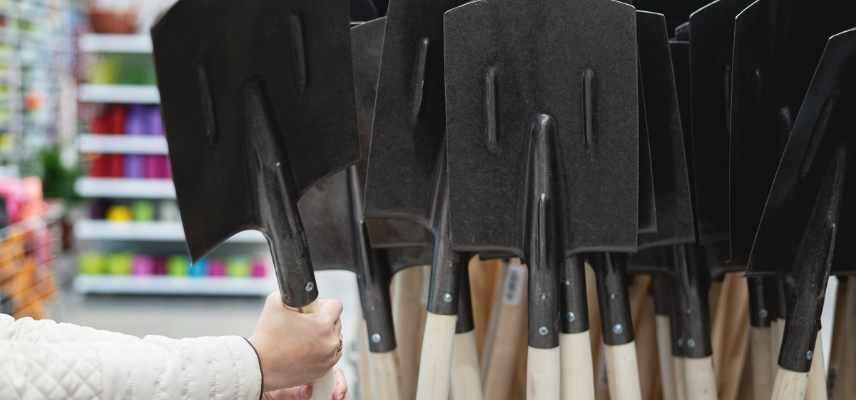
Discover other Spades, shovels, and forks
View all →Available in 1 sizes
Available in 1 sizes
Available in 1 sizes
Available in 1 sizes
Available in 1 sizes
What are the uses of a spade?
The spade is an essential tool for all gardeners. Uses of a spade in the garden are numerous:
- Making planting holes: before planting a tree, a bush or even a large perennial, dig a hole, sometimes of considerable width and depth. A classic spade is ideal for this (or a shovel in heavy or sticky soils).
- Transplanting plants: a spade is also used to move plants, sometimes already large.
- Dividing perennials: to divide perennials, you can lift the root stump using a digging fork. Afterwards, divide perennials either by cutting with a knife, by cutting with a standard spade, or by inserting two fork-spades in the centre and prising them apart.
- Cutting roots: a well-sharpened standard spade or a shovel is very useful for cutting an annoying root in a planting hole, for example.
- Turning, loosening and aerating soil: this is spading proper! Splitting and turning soil to loosen and work it before planting or sowing. A “single-spade depth” corresponds to the height of the blade, roughly 30 cm. Double digging, an old practice on very compact soils, acts to double that depth, around sixty centimetres.
- Incorporating manure, compost or green manures.
Please note: I have deliberately placed these last two uses at the end of the list. Paradoxically, they are the least necessary in the garden. Spading proper, with full soil turnover, although sometimes useful on very compacted or oxygen-deprived soils, severely damages soil life and structure. Other solutions exist that require little or no soil disturbance, such as using a green manure, mulching, switching to a grelinette… Note that a digging fork causes far less damage.
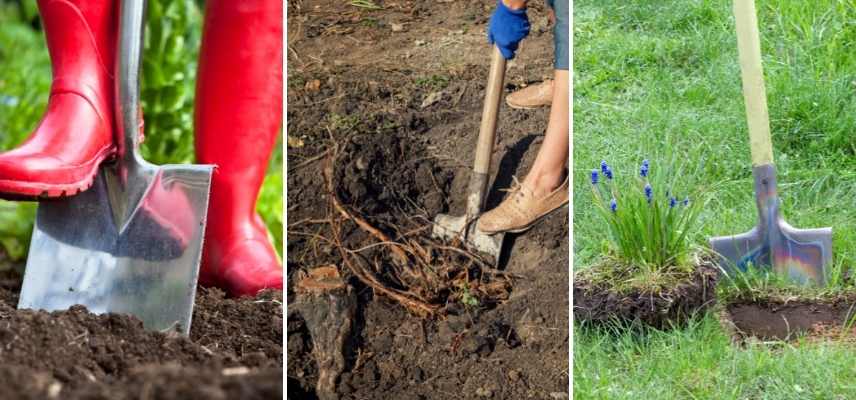
Turning soil, cutting roots, making planting holes are well-known uses of the spade.
How to use a spade?
As with any tool, a spade must be used correctly to achieve perfect work without risk of injury. Spading and all work using a spade (see point 3) should be done when the soil is slightly damp, not excessively. Here are the steps for perfect spade work without injuring yourself.
- Hold the handle firmly: left hand on the grip for a right-hander (right hand for a left-hander), and the right hand should slide along the shaft to guide the movement. It is this hand (and the arm and shoulder that accompany it) that will do most of the work.
- Put one foot on the ground and the other on the edge of the spade blade. Personally, I recommend the stronger leg on the blade: often the right leg for a right-hander or vice versa for a left-hander, but take into account any weaknesses or injuries or simply muscular asymmetry (editor’s note: for example, I am right-handed, but it is my left leg that pushes the spade blade). Indeed, it is the leg that will have to push most to drive the blade or tines of a spading fork in.
- Press down with your foot on the spade blade and drive it into the soil for its full length.
- Pull the handle towards you to free the clod of soil while keeping your back straight.
- Lift the spade and turn the clod over.
- Do not work beyond your physical limits. Take breaks and remember that what is not spaded the same day can be done the next day.
please note : Classic spades or spade-shovels are not suitable for very compacted, very hard or very stony soils. In that case favour a spading fork or a ‘louchet’ for heavy, sticky soils.
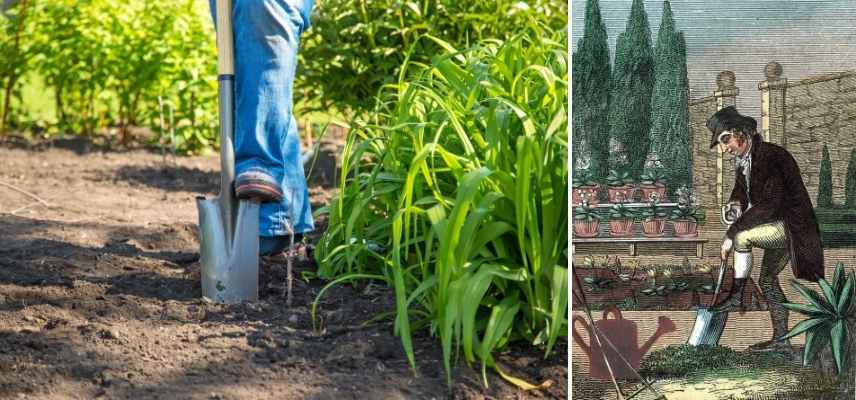
Handling the spade correctly is important to work well. On the right, an old engraving.
- Subscribe!
- Contents
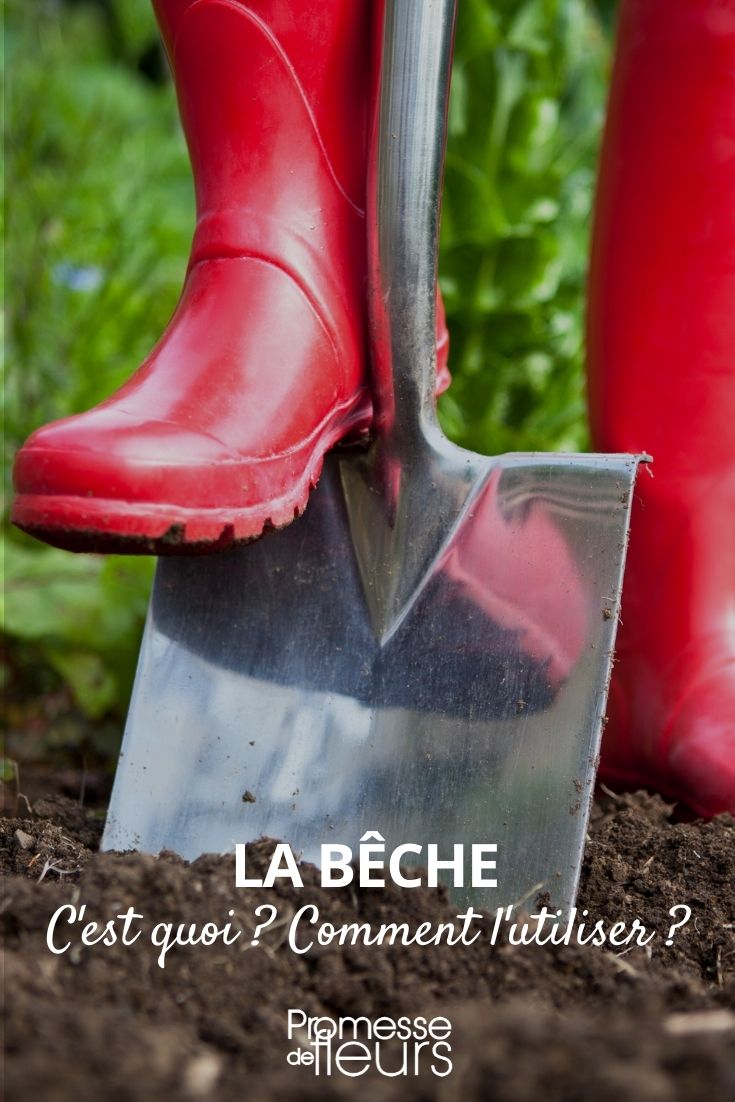































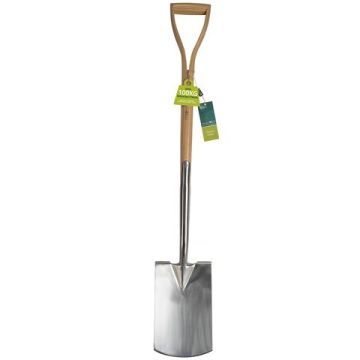
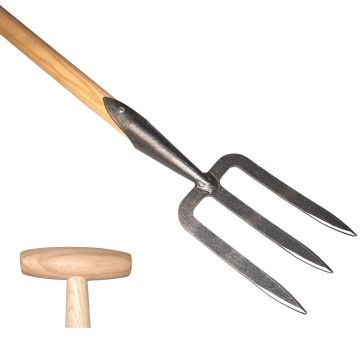
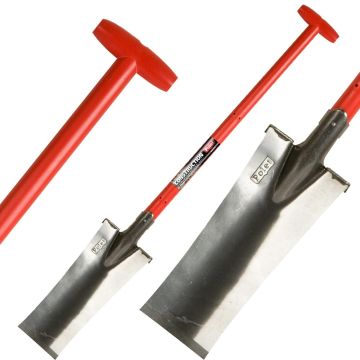
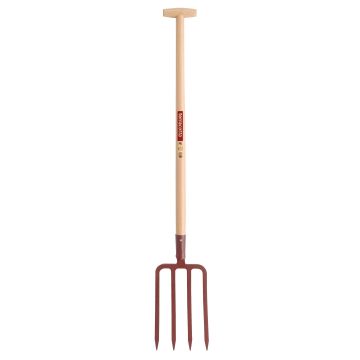
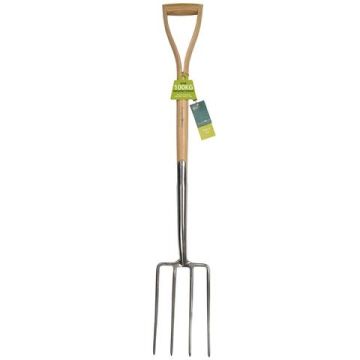

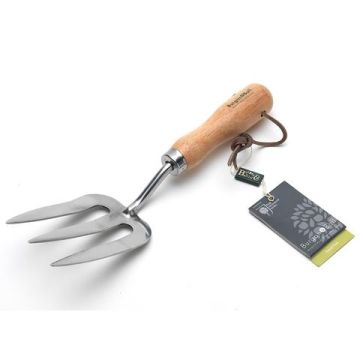
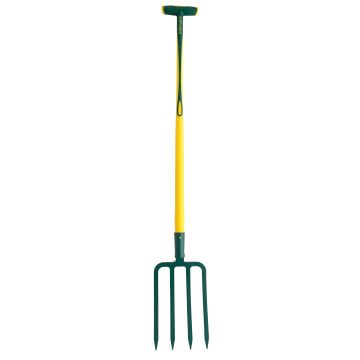
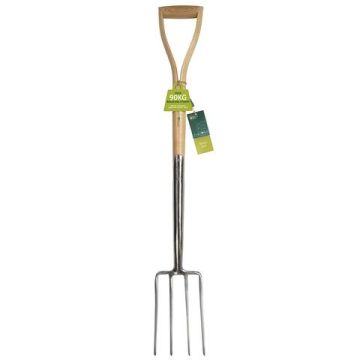

Comments